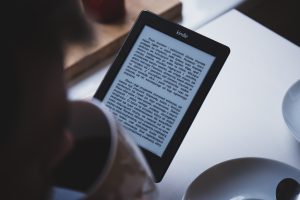
The open education
Open education includes resources, tools, and practices that are not subject to legal, financial, and technological constraints and can be fully utilized, shared, and adapted in a digital environment. Open education maximizes the power of the Internet, making education cheaper, more convenient, and more effective. There are some open libraries. The Open Library provides free textbooks and other relevant academic materials for learners and educators. The open library is easy to access and search, and has the resources to start your organization’s open educational resources (OER) project. The library keeps up on data on adoptions, resources and student savings reported in the province. Visit an open library and use our savings calculator to learn about open educational resources (OER) adoptions that can help your students.
The explanation of open educational resources (OER)
open educational resources (OER) are teaching and learning resources such as textbooks, multimedia, tests, software, and assessments that reside in the public domain or have been released under an intellectual property license, such as a Creative Commons license that permit the free use and repurposing of the resources by others (Hilton, 2016). Open education, the word Open has a more precise meaning. One of the definitions provided by Oxford is with no restrictions on those allowed to participate, open discussion meetings. An increasing number of community colleges and other publically funded state colleges are using open education resources to reduce or eliminate the cost of course materials for students. Because open educational resources (OER) is free to acquire, instructors can design courses to use open educational resources (OER) rather than traditional textbooks and eliminate the need for a student to determine if the cost of the course materials are prohibitive of taking the course. Besides, open educational resources (OER) use also represents additional financial savings to the instructor or college by permitting reuse and alteration of the course materials without any licensing charges. Consequently, the cost savings from using open educational resources (OER) are consistently cited as a prevailing benefit. I find the model for an open pedagogy, with eight interconnected and dynamic attributes, participatory technologies, people and openness, trust, innovation and creativity, sharing ideas and resources, connected community, learner-generated, reflective practice, and peer review.

The open textbook
A typical example of open educational resources (OER) is an open textbook. The rise in textbook prices, coupled with rising costs of higher education, has led some teachers to try to replace textbooks with open educational resources (OER). In our learning process, there is a fixed textbook fee for each semester, yet it is not cheap. In the last forty years, the cost of textbooks has increased by over 1000%. But sometimes we rarely use textbooks, or even almost useless. Berry et al. (2010) did a survey for 264 students found that “only eighteen percentages of the students reported that they frequently or always read before coming to class. In contrast, 53 % reported that they never or rarely read the textbook before coming to class” (p. 34). The National Association of College Stores (2018) claims for 2016–2017, the average student spends $579 on textbooks annually. An open textbook is often structured nearly identical to a traditional textbook. It may have a title page, chapters, and used to provide a visual example to accompany a textual description. Open textbooks are almost always created digitally in either HTML or PDF file format. Similar to traditional textbooks, open textbooks go through a review process, either via peer review or through a community rating system (Rodriguez Solano et al. 2015). Some open textbooks may also go through a copy-editing process. Printed copies of open textbooks may be available but with the expenses, like ordering from a printer, most likely being supplied by the eventual reader. The open textbook is free to acquire. Students can choose whether to use a computer, a mobile phone, an iPad, or print it out to read. Most modern eReader devices are lightweight. It’s much easier to carry an eReader than to bring physical books.
Textbooks are a traditional part of the educational experience of many university students. The use of textbooks is essential. Students who use textbooks will gain a wealth of academic experience and demonstrate better classroom performance. I think the most prominent feature of open education is the sharing of resources and ideas. KPU is a public degree-granting undergraduate polytechnic university in British Columbia, Canada, offers Canada’s first Zero Textbook Cost programs. KPU offers over six hundreds courses that have zero textbooks costs. As a student, I strongly encourage such programs. This program not only helps students save money on expensive textbooks but also let the students experience the open education. We can popularize e-books instead of paper books. In this way, there is no cost, follow the trend of science and technology, and it is more convenient for students to use. But nowadays e-books can’t completely replace paper books. It is also impossible for all schools to use e-books as textbooks. So what we can do now is increase the number of use of textbooks. In other words, is using the used-books as much as possible. This is also a small area of resource sharing.
Although the open education resource has many benefits, it is difficult to make it widely available. In our inherent impression, the higher the price, the better the quality. So some people may still choose to spend more money to buy traditional textbooks, even it has the same content as the free open textbook. There is also a situation where some instructors force students to buy printed textbooks. The instructors believe that when you need to remember what you read, the print will be better and the e-book will be difficult to absorb.

In total of 46,149 students participated in a study on the impact of open educational resources (OER) on learning outcomes. Only one of the nine studies on OER showed that the use of OER was associated with lower learning outcomes, and was not related to positive outcomes in more cases. (Hilton, 2016) In some cases, open textbooks are printed and used just like traditional textbooks. In other cases, students can only access OER digitally. These design differences make it difficult to directly link learning gains and losses to open education resources. For example, open digital textbooks can theoretically be used to increase access, but students get suboptimal results because they read online rather than print. It is not certain whether the design differences actually have an impact on these studies; however, some survey have shown that in some cases, when they read the electronic and print editions of textbooks, the student’s performance seems to no difference.
Online Web Sites with open education resources
I find some open education resources website, such as The Community College Consortium for Open Educational Resources, Free Online Course Materials, The Open Education Resource (OER) Foundation, WikiEducator, OER Commons, MIT OpenCourseWare (OCW), OpenStax, The Open Course Library, and The World Digital Library (WDL) .Open educational resources (OER) is often used in some online courses.The instructor does not need to unify the textbook, but gives the student a website link, and the student can read and download it by themselves.

References
Abramovich, S., & McBride, M. (2018). Open education resources and perceptions of financial value. The Internet and Higher Education, Retrieved from https://www.journals.elsevier.com/the-internet-and-higher-education
Berry, T., Cook, L., Hill, N., & Stevens, K. (2010). An exploratory analysis of textbook usage and study habits: Misperceptions and barriers to success. College Teaching, 59(1), 31–39.
C. Rodriguez-Solano, S. Sánchez-Alonso, M.-A. Sicilia(2015), Creation of reusable open textbooks: Insights from the Connexions repository, British Journal of Educational Technology, 46(6), pp. 1223-1235
J. Hilton (2016) Open educational resources and college textbook choices: A review of research on efficacy and perceptions, Educational Technology Research and Development, 64 (4), pp. 573-590
Image from
Photo by Davide Cantelli on Unsplash
Photo by Sharon McCutcheon on Unsplash
Photo by freestocks.org on Unsplash
Photo by freestocks.org on Unsplash

Leave a Reply